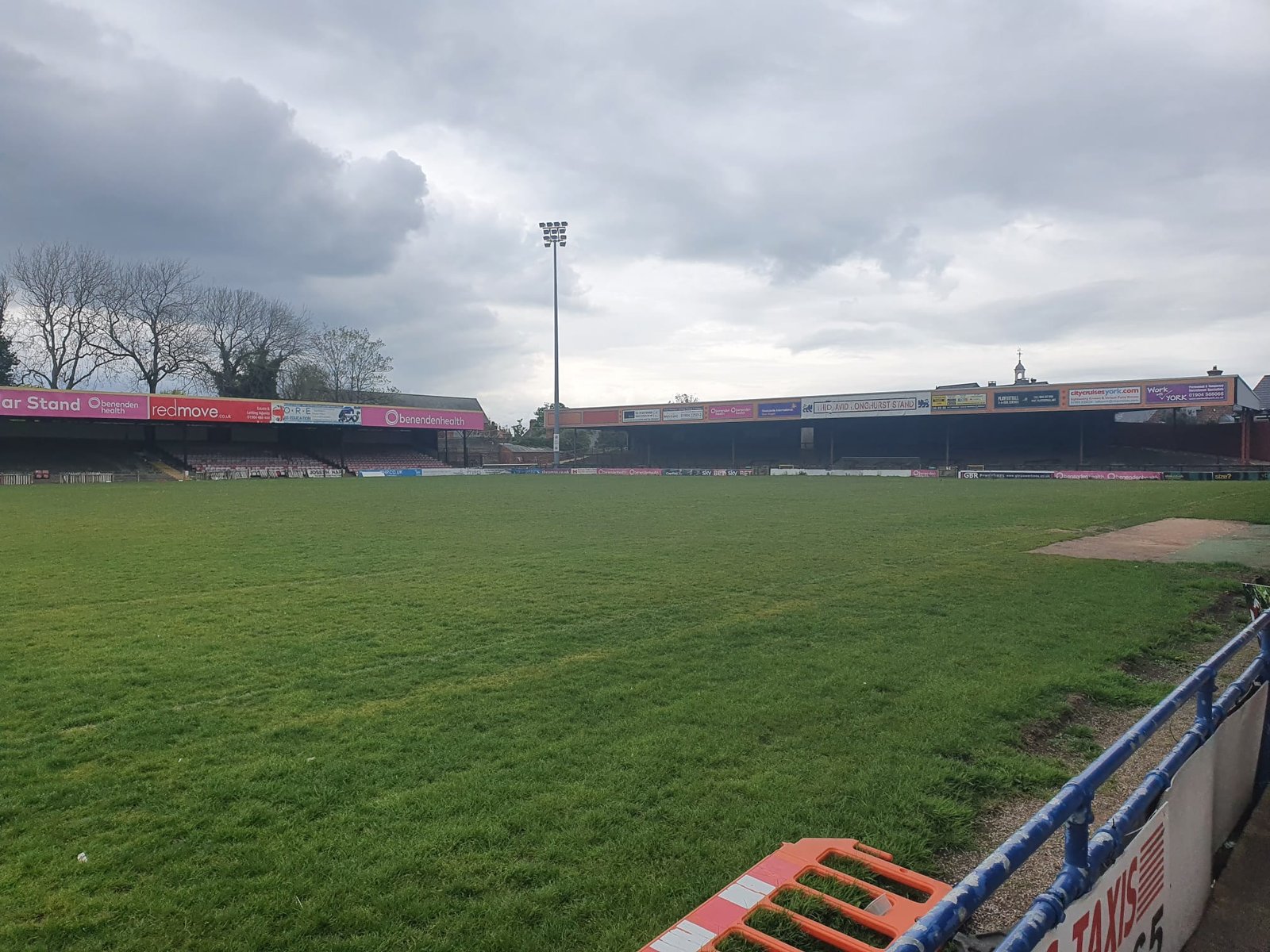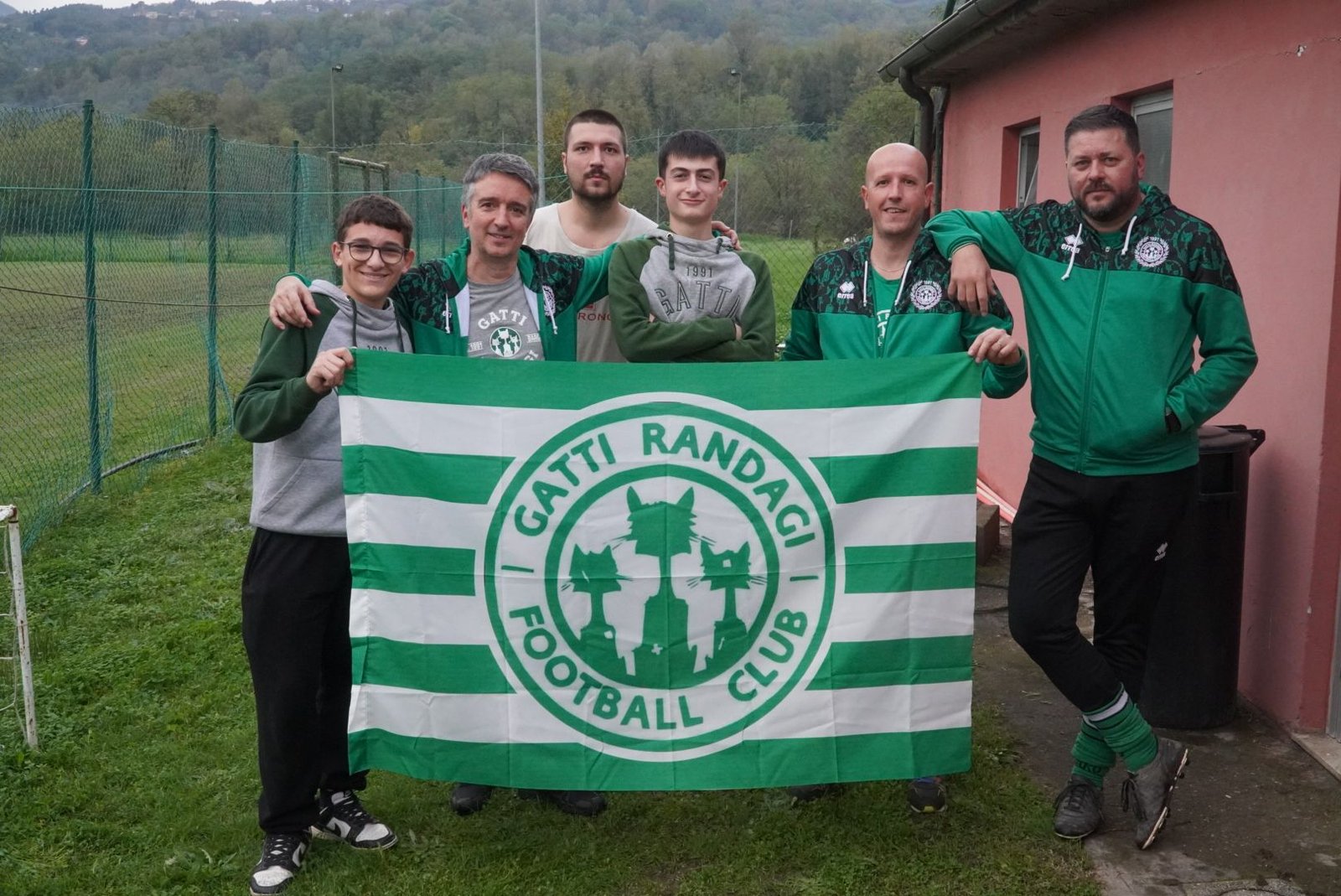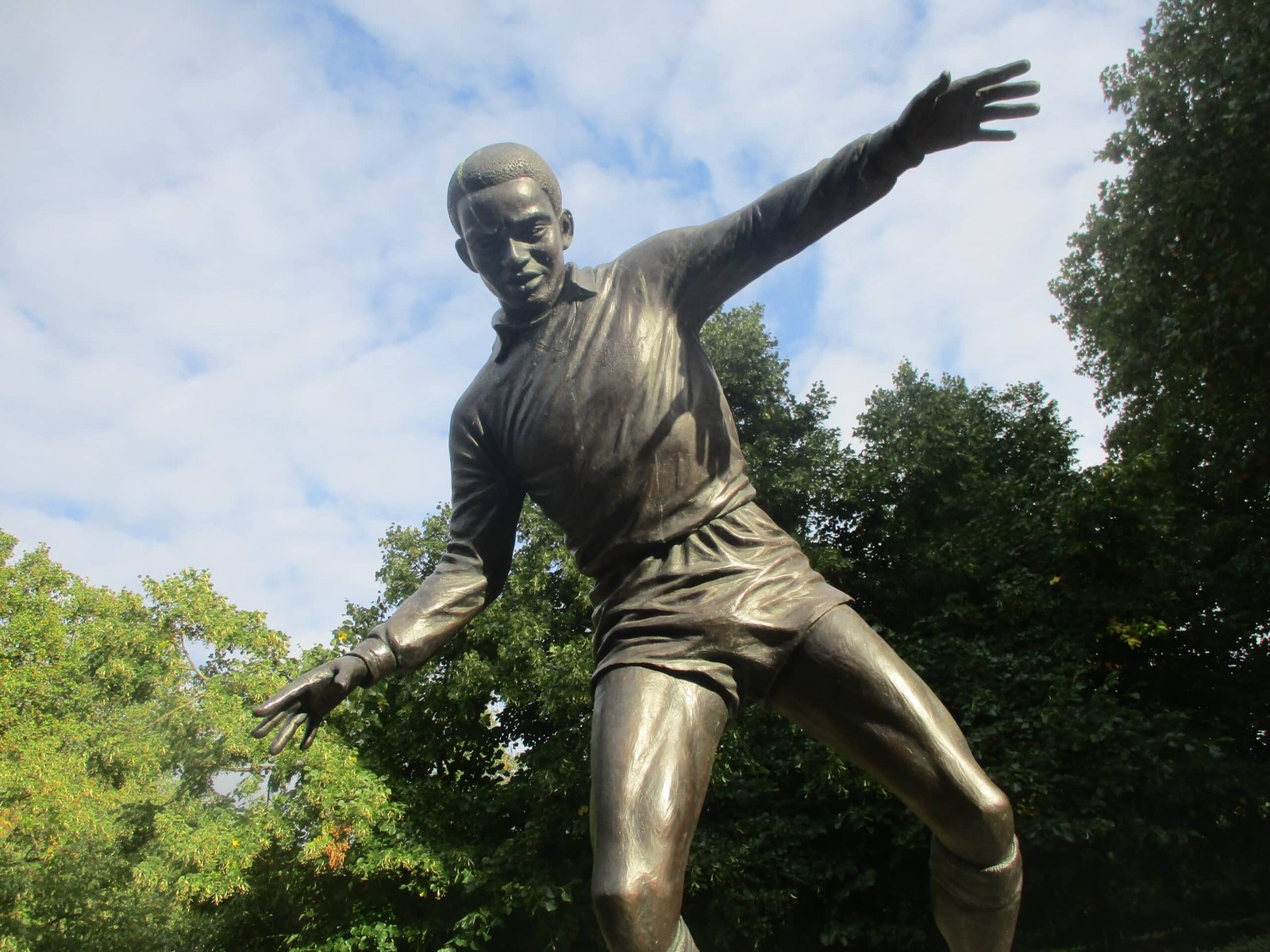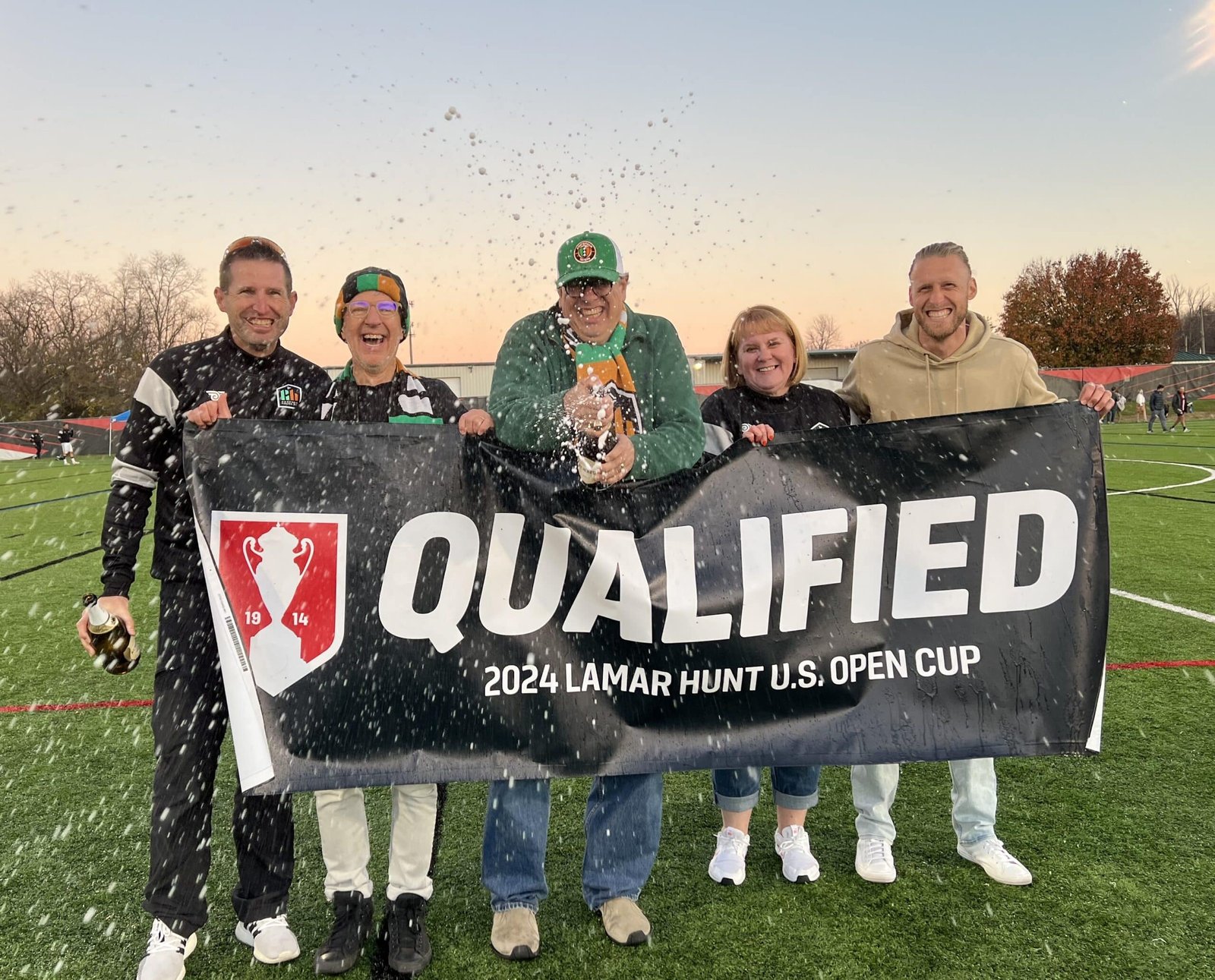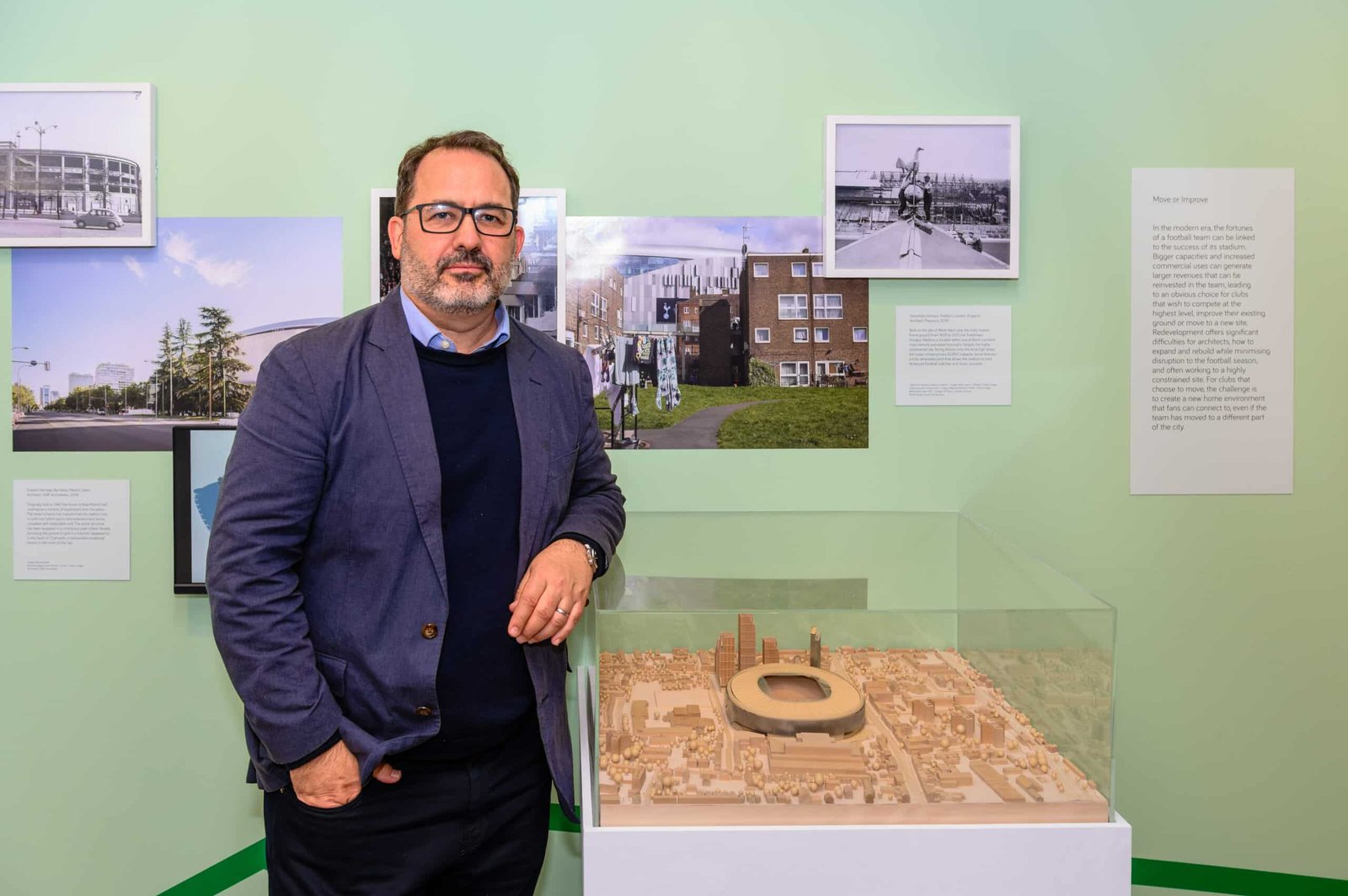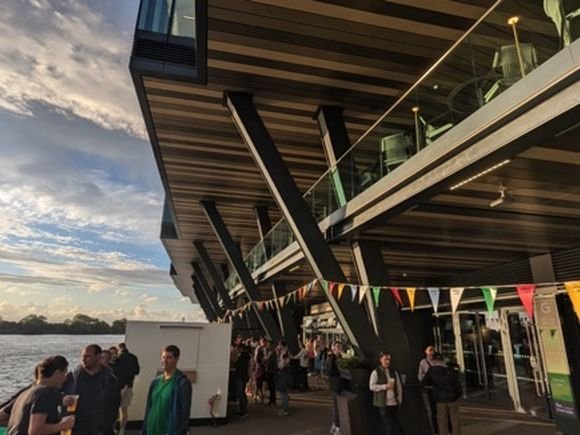As York’s former home is pulled down, Colin Young is on a mission to salvage a souvenir
The yellow sign on the lamppost on Grosvenor Road points to Bootham Crescent. This used to be the away end. But there’s a clue on the left of the sign; the image of a small black house… Bootham Crescent is no more. Not as I knew it.
The sign points to Alf Patrick Court – the first street to be named after a York City legend by fans – round the corner to Keith Walwyn Walk. Further down there is David Longhurst Way, where the main gates once stood.
The David Longhurst Stand – and the pitch where the York striker took his last breath after a heart attack – is now a building site.
The last time I was here, the bulldozers still hadn’t moved in. Persimmon Homes have finally got their hands on this prime real estate close to the town centre, City’s quaint home from 1932 until 2020.
In 2021, club moved into the new-build LNER Community Stadium, where later that day I would be reporting on their progress to reclaim the Football League status lost in 2016.
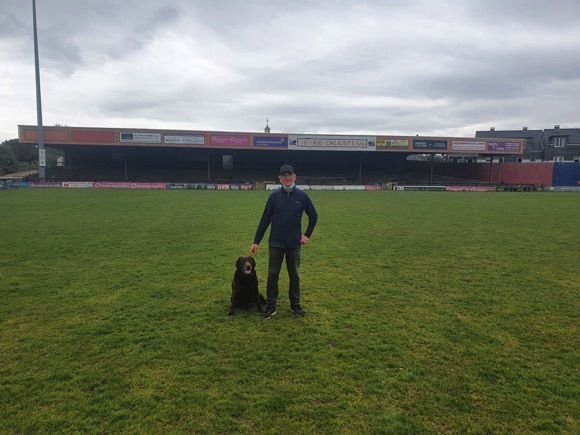
Before its demolition, I’d come back to Bootham Crescent to pick up the press-box seat and desk I had once graced and, more recently, won in an auction.
I drove through the entrance gates for the first and last time, parked in the tiny car park beneath the main stand and directors’ lounge – once full on match days after the players had parked up – and took in the ground.
The pitch was overgrown, allowing Charlie the brown labrador to make himself at home. The stands, by this stage bereft of so many red seats, were waiting to be pulled down. It was a sad and privileged personal farewell.
Today, two hours before City took on Sutton United by a mall and Cineworld past York’s northern outskirts, this half-built housing estate was unrecognisably quiet – a relief, perhaps, to its first handful of residents by now used to the weekday banging and digging.
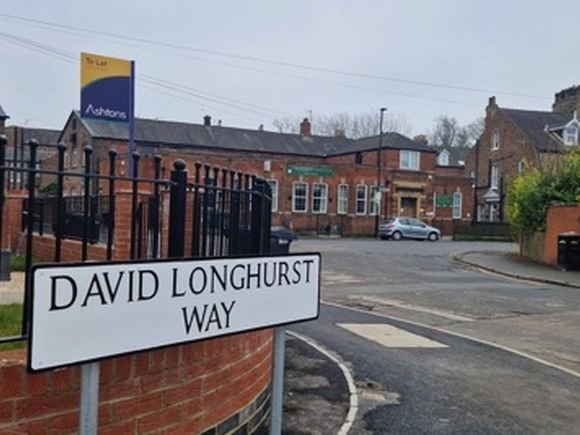
Some homes were occupied but there was little sign of life around Bootham Crescent on this Saturday lunchtime – save for the lights shining from the estate’s single welcoming hub. Here, by the site where Alf Patrick and Keith Walwyn scored so many of their 200-plus goals, I was glad to see the Burton Stone Working Men’s Club still standing.
My granddad Charlie Ross helped save the building from destruction by German bombers in ’43 when he was briefly stationed next door. Lumley Barracks are still there, too, although the presence of a stranger taking photos did not seem to be appreciated by the cadets drilling in their blue uniforms, nor by the shouty bloke on the parade ground.
A cloying white mud sticks to the boots when you walk up David Longhurst Way, which is far from completion. Amid the combination of sold, available, built and nearly-built homes for York’s future generations, behind the wire and wooden fences, a great hole emerges where the press box once stood.
And if I ever do come back, even this version of Bootham Crescent will be unrecognisable.
I was a Junior Red in the early ’80s. I can still name the team: Jones, Hood, Sbragia, MacPhail, Hay, Ford, Haslegrave, Crosby, Pollard, Byrne and Walwyn.
Me, our kid and a bunch of schoolmates were all Junior Reds. I fell in love with being a fan and, led by Denis Smith, this City were a great side, arguably their greatest, winning the Fourth Division with 101 points.
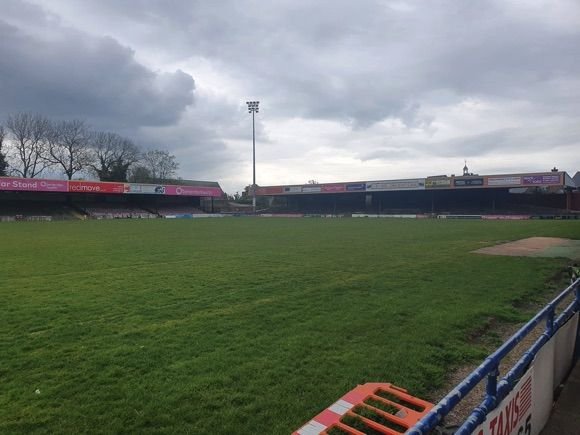
We beat Arsenal in the FA Cup on a frozen pitch that season. I still freeze-frame the blurry TV image of me leaping up and down to the right of the goal after Keith Houchen had skittled home the winner.
And I loved John MacPhail. Nearly as much as Kenny Dalglish. The highlight was the draw with Liverpool in the next round when MacPhail was outstanding, and then the replay at Anfield – when we got battered.
Back then, Malcolm Huntington was covering City for the Yorkshire Evening Press. He was still going when I joined the paper at 18 and even at the few York games I reported on years later for the nationals.
The press box was always a tight squeeze – four wooden seats across and about ten rows back, from the edge to the top of the main stand – so tight that big-name reporters were crouched by the touchline for City’s FA Cup heroics of 1985. Malcolm Huntington, the well-spoken, respected Wimbledon umpire, never moved.
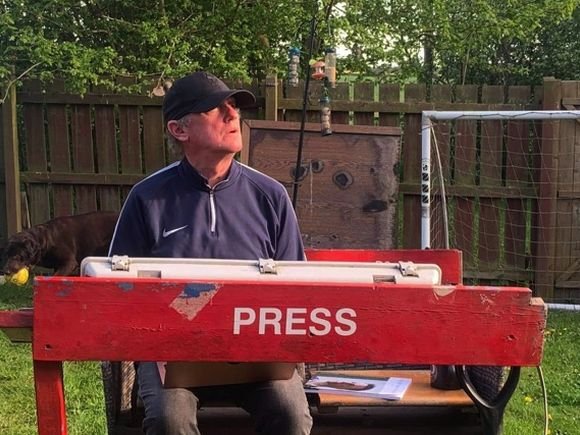
He sat two along from my best mate, Greg, and his dad Derek, who can’t have missed many games at Bootham Crescent from when it was built in 1932. Even as a young lad, I’d look across in curiosity and envy at the pressmen in those seats.
Now, I had to have a piece of it before it went to the landfill, and then take it over to my mate Paul in Withernsea for him to fashion it into a proper bench.
A friend once described the walk from York station to Bootham Crescent as the best in British football. It certainly had its merits for the thirsty traveller, given the many hostelries fringing the edges of the city walls.
In the car, you face the dreaded A1237 ring road – so bad even Chris Rea avoids it – before the lottery of parking in the same time zone. Once you arrive, however, there’s a swimming pool and gym, a library and coffee shop, and beer under the main stand at £6+ a pint. I’ve arranged to meet Greg and his family, including his partner Heidi who played for York City Women and graced Bootham Crescent on a couple of occasions.
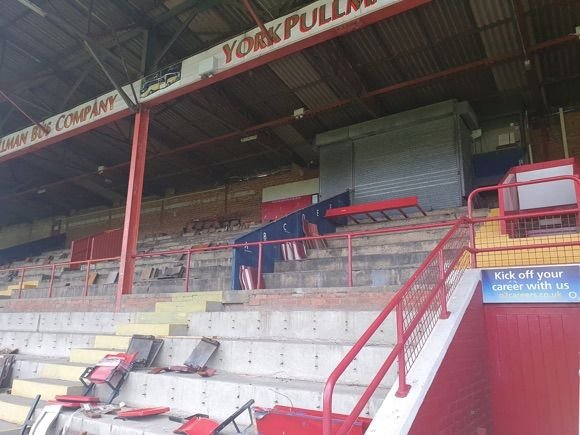
Today, you can still avail yourself of refreshments at the wonderful Blue Bell in town before hopping on the P&R bus to the LNER Community Stadium in Huntington.
As Junior Reds, we knew to stay clear of ‘the cages’, the holding cells where transgressive away fans were held. At the LNER, ‘the cages’ are the artificial pitches by the stadium, inundated with kids playing mini games of football right up to kick-off.
The word ‘community’ is not used accidentally here, because a new community of football fan is emerging at the ground to support a football club which is embracing families and young supporters.
Greg’s son Joe comes running out of the yard about 20 minutes before the start – breathless, sweating and insisting his short-sleeved York City goalie top will be sufficient for the upcoming two hours of entertainment.
The adults, meanwhile, brace themselves in three layers to face the same Siberian winter that would have swept through York one January day in 1985.

